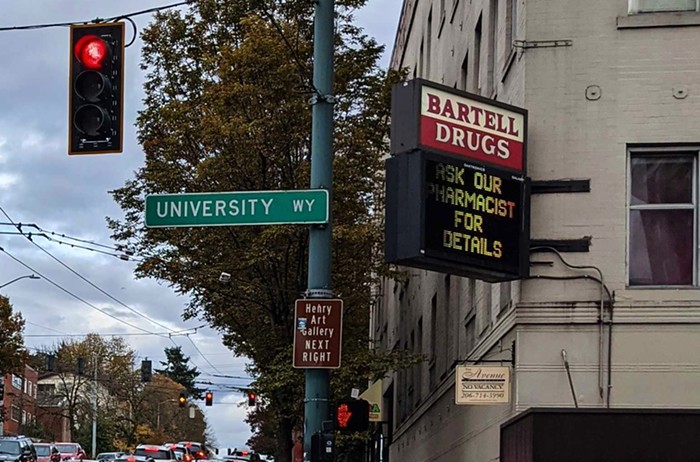
We hear it again and again: How can the stock markets be rising while the conventional economy is still in a deep recession? Has the moneyed class finally found that dream of dreams, the goose that lays golden eggs forever? Let's look at some of the explanations that the mainstream has provided for this monster of a situation.
MarketWatch's headline offers a lowbrow reference and a highbrow reference: "Stock market looks like ‘hapless Wile E. Coyote, running off the edge of a cliff,’ says behavioral economist."
The lowbrow image is, of course, Wile E. Coyote, the Looney Tunes character who often only falls when he realizes the ground beneath him is long gone. He is running on nothing but air. But if he doesn't recognize this, the running, it seems, could go on indefinitely.
The highbrow reference comes from the culture of the lettered: Voltaire’s Candide.
James Montier, a behavioral economist, provided MarketWatch with the image in "a recent research paper titled, "Reasons (not) to be cheerful: Certainty, Absurdity, and Fallacious Narratives":
It appears as though the U.S. stock market has drunk from Dr. Pangloss’ Kool-Aid – where everything is for the best in the best of all possible worlds,” he wrote, referring to Voltaire’s character in Candide, who asserted the Pollyannish philosophy that the current state of affairs always represents the best of all possible worlds.Though the image comes from high culture, it is not as good as the one that comes from low culture. Dr. Pangloss is the fictional character in Voltaire’s Candide, which many consider to be a very shallow attack on a key concept in the metaphysics of the 17th century philosopher, Gottfried Wilhelm Leibniz.
The idea of the "best of all possible worlds" is not easy to explain. But it basically comes close to a kind of mathematical theorem for the production of the greatest variety with the smallest number of variables possible. Voltaire presents Leibniz's concept as meaning: This is the best that can ever be, and therefore live with it, don't worry about it, be happy despite all of the flaws. We could go on and on about this, but the correlation between Candide and the current stock-market euphoria is rather flabby. The image of Wile E. Coyote, however, is the cookie. The ground is gone. The markets are still running.
But there is another view that is stated in two articles. One is ABC News's "Why the stock market is divorced from the pain of a pandemic economy," and the other is Business Insider's "Legendary investor George Soros says the stock market is trapped in a Fed-fueled liquidity bubble." The odd thing is that ABC News gets to the heart of the matter, whereas the Business Insider skirts it.
Legendary investor George Soros says the stock market is trapped in a Fed-fueled liquidity bubble https://t.co/BbOPp27qAp
— Business Insider (@businessinsider) August 13, 2020
The stock market's Wile E. Coyotism operates in this way: The US's Fed Bank is pumping trillions into the stock markets, and the expectation is that the US government will supply the public with cash as well.
The article about Soros focuses on the latter...
Stocks' lofty valuations are underpinned by hopes for another round of fiscal stimulus and the expectation that President Donald Trump will announce a reliable coronavirus vaccine before the presidential election, Soros said in an interview with the Italian newspaper La Repubblica published on Tuesday. The next spending bill would need to eclipse the $2.2 trillion Cares Act to meet investors' expectations, he added.
The post on ABC News gives the former a lot space at the end of the post...
"A key reason markets have climbed, Goldstein and Sonders agreed, is because the Federal Reserve took dramatic steps to maintain liquidity.Since the March market crash, the Fed has pulled out all the stops to help buoy the financial system — slashing interests rates further, unveiling a quantitative easing plan, buying corporate bonds.
"We've never seen liquidity pumped into a crisis to that degree, ever in history," Sonders said.
"Because the economy during the worst of the pandemic was basically shut down, all this liquidity basically boosted the money supply, but it couldn't find its way into the real economy," she added. "But all this liquidity has to go somewhere, and it went not just into the stock market, but every market has done well — junk bonds, precious metals."
But what can this mean? How do these developments explain the present stage of capitalism?
First, we must abandon the idea that capitalism is about economics. It is, at this point, nothing but the maintenance of social relations not so much to production, as Marxists of historical materialism would have it (a school of thought I oppose because of it confuses Victorian concepts of progress with universal history), but simply class formations as is.
Capitalism is an institution of control by purely cultural means. Such has been the case from its inception. If this fundamental understanding is not accepted, then you will have to believe the Fed's pumping of trillions into stock markets to keep the value of shares way, way, way above ground is some how about the production of the conventional wealth (use values) of a nation. (And even the use values of capitalism is not unproblematic, as Jean Baudrillard makes clear in The Mirror of Production, as well as Noam Yuran in What Money Wants: An Economy of Desire.)
What most Americans don't realize is that their experience of capitalism was shaped by developments that followed the Second World War. This capitalism was not that of the 19th century, which had minimal support from the government. The markets of that time were, for the most part, left alone. But this began to change at the end of the 19th century due to processes that more and more centralized and concentrated capital and production.
The crisis at the beginning of the 20th century was the growing socialization, concomitant with the growing productive power, of private enterprise in contradiction with a vast population that lacked the means (the money) to clear the market. The missing actor in this crisis was the government. It was sidelined by a ruling “structure of feeling” that prized limited government participation. A series of destructive events that began in the second decade of that century and ended in the fourth, unified that contradiction. And here appears an interesting thing to think about—interesting because it's like two trains running. In Marxist terms, and this is how Marx is distinct from Hegel, the unification of a contradiction is not a blessing but an explosion. (A definition of "structural feeling" will be provided at the end of the post.)
What is meant by this is not hard to understand. A market grows only if the unity of buying and selling is maintained by the medium of money, the universal equivalent. But the temporal dimension of money transforms buying and selling into individual moments. One is one thing (happens now), and the other is a completely different thing (happens later). In a crash, this difference, this distinction, this temporal separation evaporates. And the deeper real of the unity (its nonlocality) imposes itself violently. Buying and selling are slammed together and money flees the market like panicked birds after a bomb is detonated.
Americans (particularly white Americans) were not only sheltered from this kind of capitalism—the deep negative of the real of buying and selling—for a good 40 years, but they also provided a galaxy-sized sink for the market's expanding universe of products. We call this period of American history The Golden Age of Capitalism. More important still, government intervention (or, in its American version, bargain-basement socialism—Scandinavians got top-shelf socialism) was always there to maintain the unity of money. Things were thus until the US entered of the 1980s. At that point, the deeper unity made its return, but under changed circumstances. In the past, there was no Big Government to pay for the unity of the negative (in capitalist terms) of buying and selling (they are one in the absence of money). In the 1980s, there was. But the post-war Big Government program, the one that solved crisis of effective demand (an industrial crisis in its essence) was captured by finance to not prevent the deeper unity of buying and selling (those destructive events could resume) but to pay for them.
We are now at the point where the markets cannot exist at all without this kind of intervention, this constant and massive injection of liquidity. And so we have the 19th century in appearance and the post-war state capitalism as its substance. What's interesting in our times is that capitalism can no longer even pretend to say, to use the words of James Joyce, "I paid my way." It in our age, we can at last see it for what it is and has always been: a form of social domination rather than a "job creator" or lifter of all boats or what have you. But the big difference, and this is what the markets tell us every day in the 21st century, is that this form social domination needs the support of the public to maintain an order that represses the public.
Last note: The best description of the concept of structure of feeling is found, I think, in Graham Rowland's essay, "The Importance of Raymond Williams." He writes:
It is here that he uses anthropologist Ruth Benedict’s book Patterns of Culture. For her a “pattern of culture” is a selection and configuration of interests and activities and a particular valuation of them that produces a distinct social organization, a “ way of life.” Williams sees this notion as means to arrive at “ . . . the actual experience through which these (pattern and characteristics) were lived.” He calls this “structure of feeling.” It is structure because institutions give it structure; it is feeling because it is not a perception of how the society operates but a perception of what it feels like to be in that society and for the structures of that society to be in each person. Moreover, Williams says that we are most aware of this in the arts of the period.

















